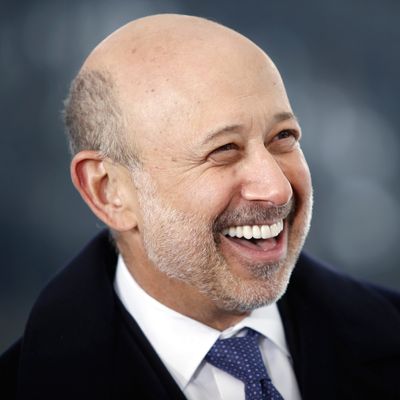
There’s good news and bad news on the plutocracy front this week. The good news: Incomes in the state of New York have climbed a decent-enough 7.8 percent during the recovery. The bad news: Every penny of those income gains went to the top one percent of earners.
The breakdown comes from the left-of-center Washington think tank the Economic Policy Institute, which looked at Internal Revenue Service tax data. It found that the incomes of the one percent grew faster than the incomes of the 99 percent in 49 states between 2009 and 2012. In 39 states, the majority of the income gains went to the one percent. And in 17 states, the one percent captured all of the income growth since the recession.
The Empire State was a banner member of that latter group: Between 2009 and 2012, the study finds, New York’s one percenters saw their incomes climb 32 percent. The 99 percenters saw their incomes shrink 1.1 percent. Hence, the gilded class captured 111 percent of the total income gains.
It’s probably worth noting the limitations of said metric. For one, the one percent and the 99 percent are not static from year to year. Maybe one year, your hedge fund hands you a $5 million performance bonus and you end up in that tippy-top percentile. Then, the next year, you bet big on Bitcoin and end up having to live on savings for a few months, dropping you back into the 99 percent.
It is also worth mentioning that within the 99 percent, a large number of individuals might have gotten raises from year to year. It is just that on aggregate, the individuals falling into that slice of the income pie were earning less — in part because the number of people employed in New York fell between 2009 and 2012.
None of that changes the broader trend: The recovery has been characterized by strong income growth at the very top and scant income growth at the bottom. And for denizens of many big cities — including New York, but especially San Francisco — the trend has walked through a fun-house mirror in recent years. The average income of households in Manhattan’s top 5 percent grew 9 percent between 2012 and 2013 alone. That means that the top 5 percent were earning about 88 times as much as the bottom 20 percent of households, the biggest such gap in the United States.
In Connecticut, the trends were a bit more exaggerated than they were in New York, a product of the state’s broad economic ossification and the financial industry’s boom. There, the one percent saw their incomes grow 35 percent, with the 99 percenters’ incomes dropping about 5.4 percent. And in New Jersey, the trends were much more moderate: The incomes in the top households went up 26 percent, and 1.4 percent for the rest.





























